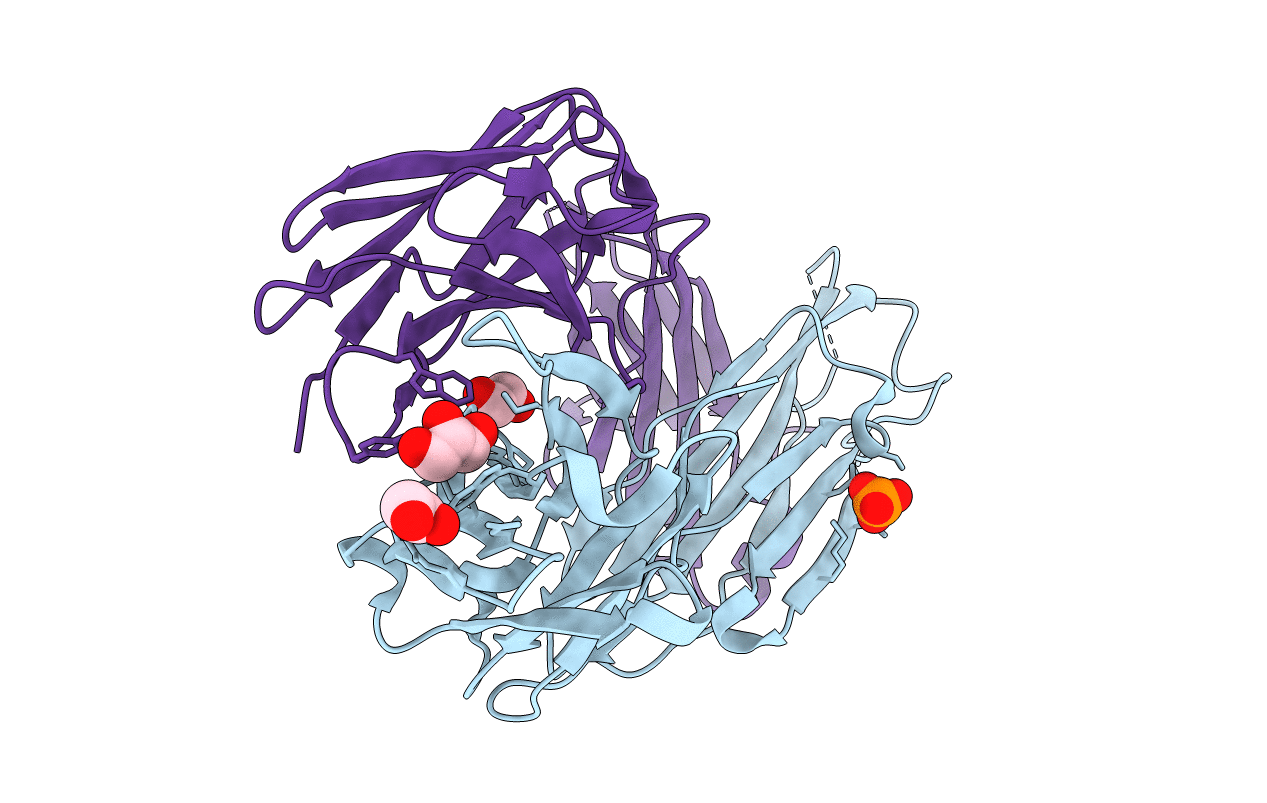
Deposition Date
2012-03-23
Release Date
2012-06-06
Last Version Date
2024-11-27
Entry Detail
PDB ID:
4EBQ
Keywords:
Title:
Fab structure of anti-Vaccinia virus D8L antigen mouse IgG2a LA5
Biological Source:
Source Organism:
Mus musculus (Taxon ID: 10090)
Method Details:
Experimental Method:
Resolution:
1.60 Å
R-Value Free:
0.22
R-Value Work:
0.19
R-Value Observed:
0.19
Space Group:
P 21 21 21


